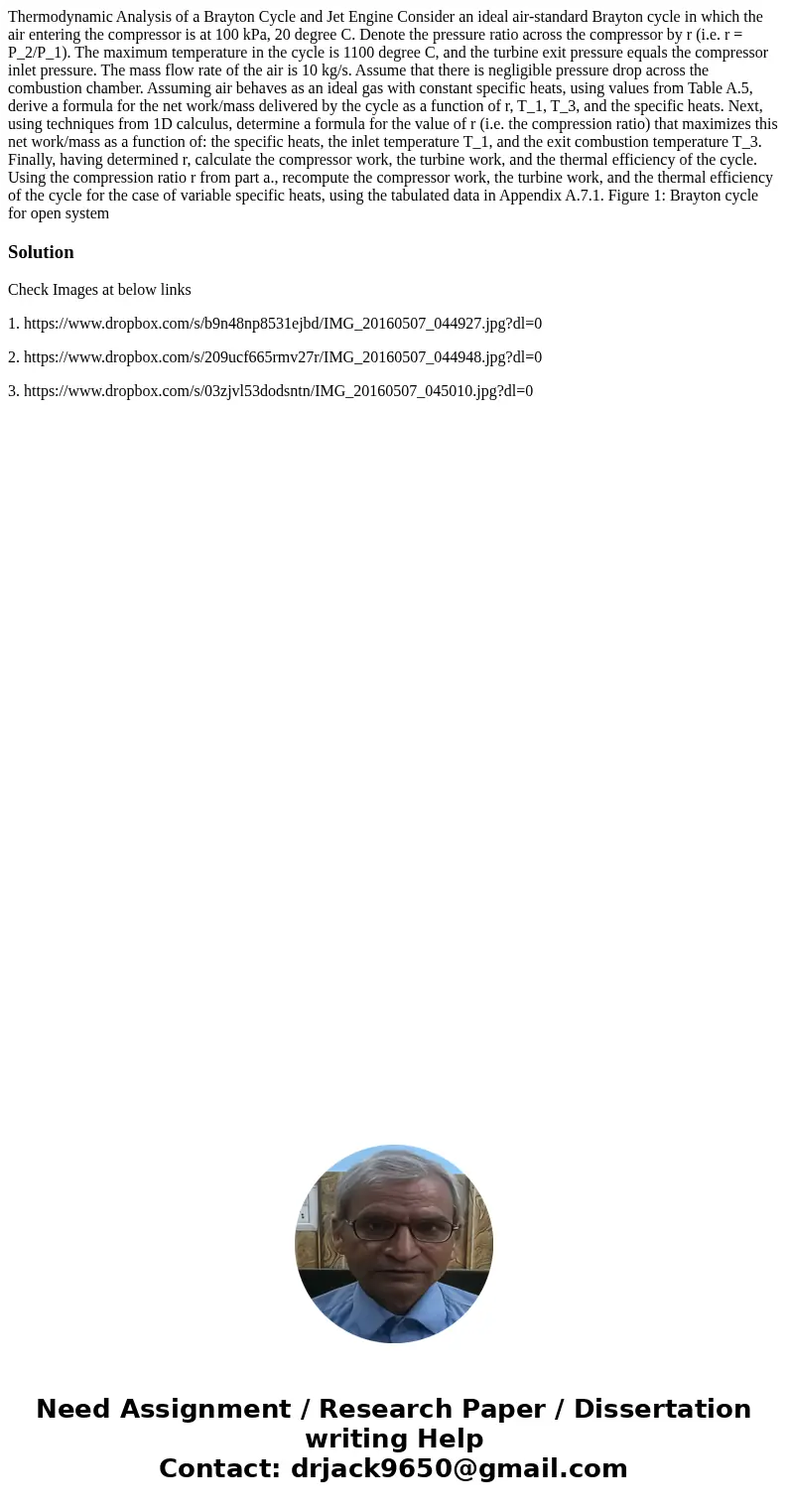Thermodynamic Analysis of a Brayton Cycle and Jet Engine Con
Thermodynamic Analysis of a Brayton Cycle and Jet Engine Consider an ideal air-standard Brayton cycle in which the air entering the compressor is at 100 kPa, 20 degree C. Denote the pressure ratio across the compressor by r (i.e. r = P_2/P_1). The maximum temperature in the cycle is 1100 degree C, and the turbine exit pressure equals the compressor inlet pressure. The mass flow rate of the air is 10 kg/s. Assume that there is negligible pressure drop across the combustion chamber. Assuming air behaves as an ideal gas with constant specific heats, using values from Table A.5, derive a formula for the net work/mass delivered by the cycle as a function of r, T_1, T_3, and the specific heats. Next, using techniques from 1D calculus, determine a formula for the value of r (i.e. the compression ratio) that maximizes this net work/mass as a function of: the specific heats, the inlet temperature T_1, and the exit combustion temperature T_3. Finally, having determined r, calculate the compressor work, the turbine work, and the thermal efficiency of the cycle. Using the compression ratio r from part a., recompute the compressor work, the turbine work, and the thermal efficiency of the cycle for the case of variable specific heats, using the tabulated data in Appendix A.7.1. Figure 1: Brayton cycle for open system
Solution
Check Images at below links
1. https://www.dropbox.com/s/b9n48np8531ejbd/IMG_20160507_044927.jpg?dl=0
2. https://www.dropbox.com/s/209ucf665rmv27r/IMG_20160507_044948.jpg?dl=0
3. https://www.dropbox.com/s/03zjvl53dodsntn/IMG_20160507_045010.jpg?dl=0

 Homework Sourse
Homework Sourse